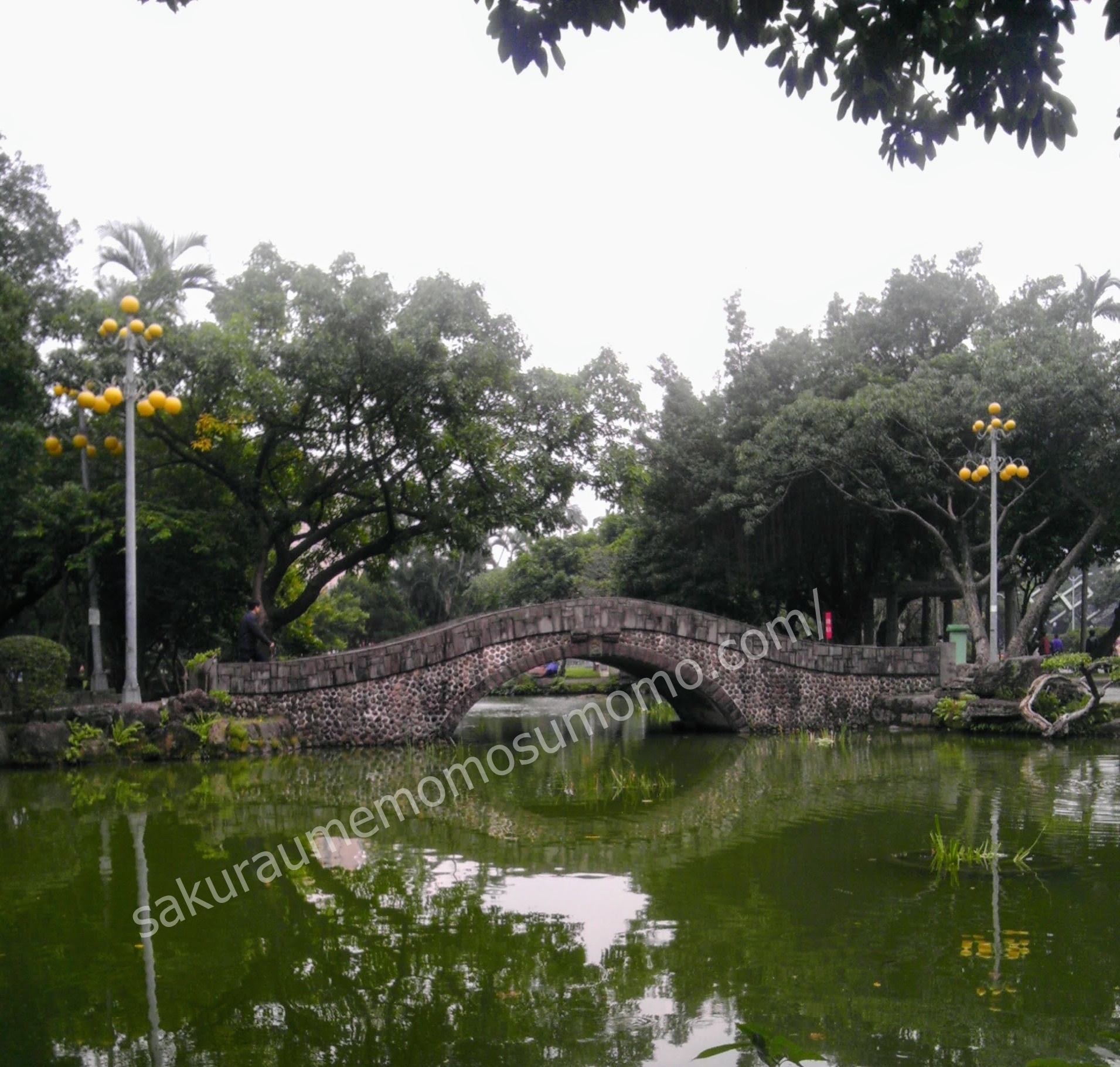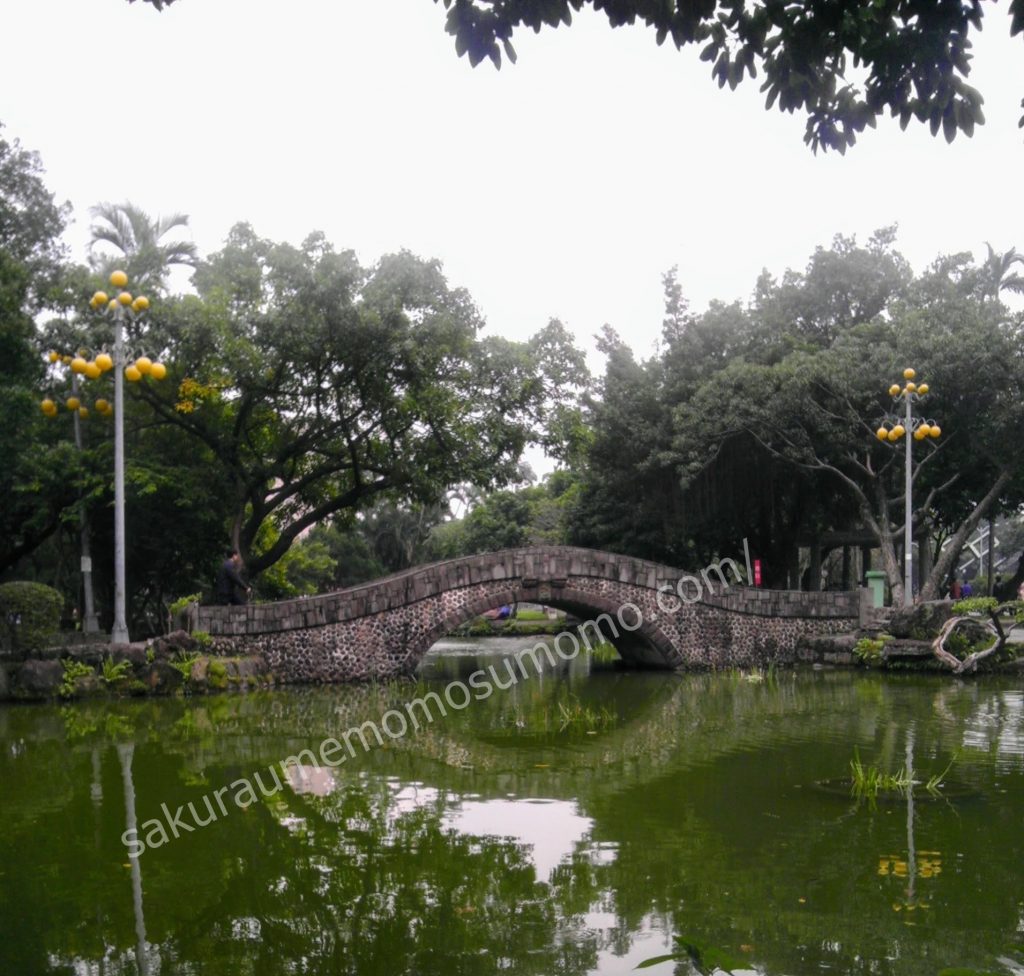
二二八和平公園 2/28 Peace Park
台北賓館を通り過ぎると公園が見えてきました。
さっそく中に入ると大きな鐘が見えます。手前には足つぼマッサージ用の石が並んだ小道が…。健康歩道と書かれています。
After passing the Taipei Guest House, I saw the park.
As soon as you enter, you will see a big bell. In the foreground is a path lined with stones for foot massage. It is written as a health sidewalk.
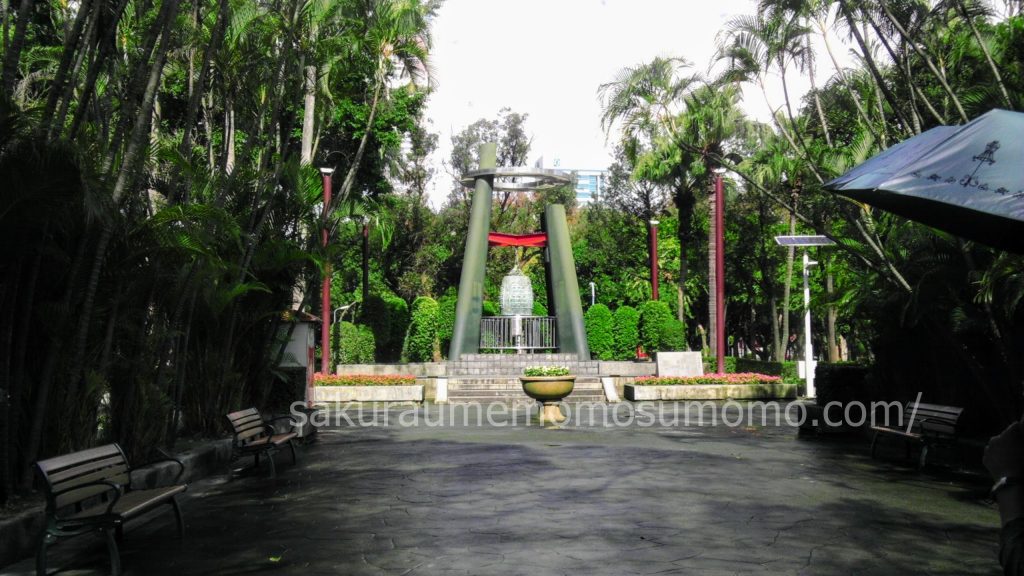
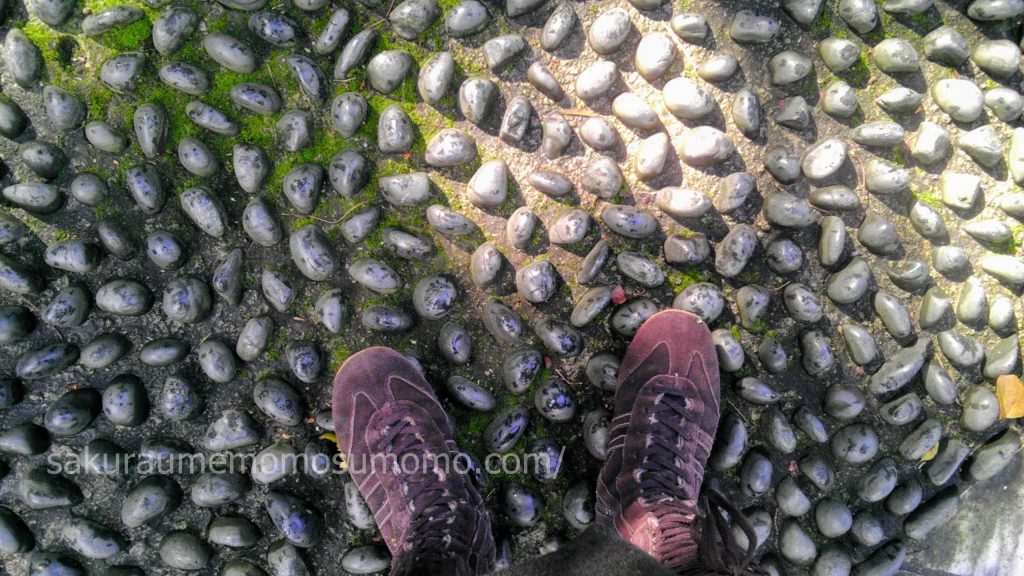
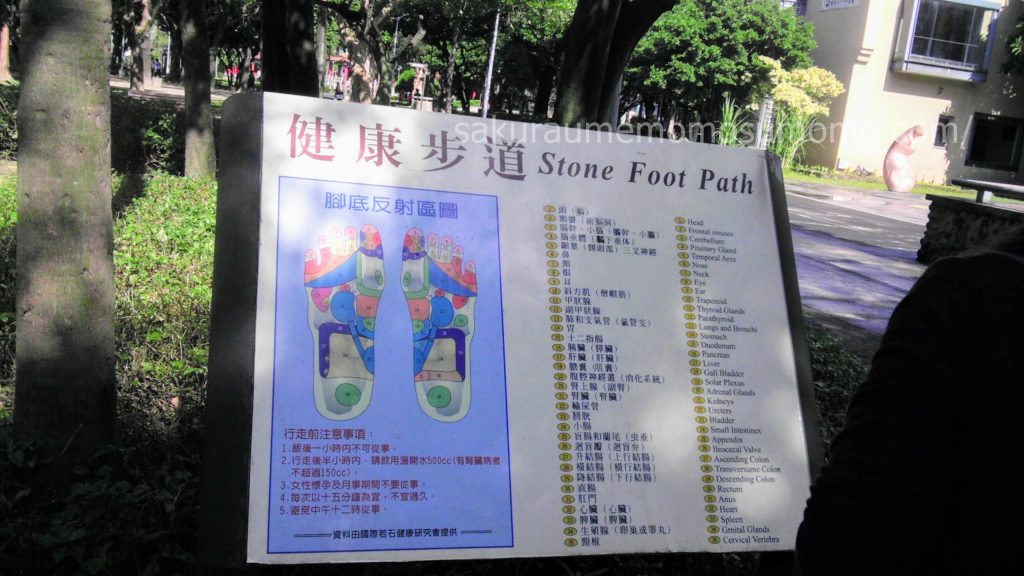
庶民の憩いの場と思いきや、公園の名称に目を向けると、歴史がありそうな気がします。If you look at the name of the park, thinking that it is a place of relaxation for the common people, it seems that there is history.
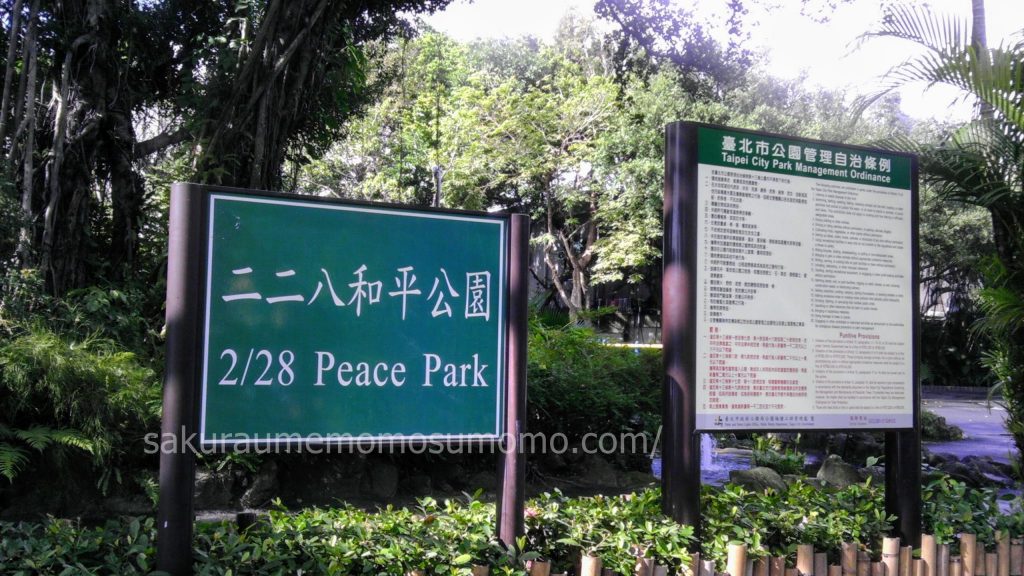
二二八和平公園(にいにいはちわへいこうえん; 英語: 228 Peace Memorial Park)は台湾台北市中正区にある公園で、日本統治時代に作られた台北新公園を前身とする。
四囲は南が凱達格蘭大道、北が襄陽路、西が懷寧街、東が公園路に接し、面積は71,520m2。
日本統治時代の1899年に台湾ではじめて作られた洋風の公園。
1908年に開園した当初の名称「台北新公園」は歴史的な事件を経て、1996年に、当時台北市長を勤めた陳水扁氏によって「二二八和平公園」という名称に改められました。
228 Peace Park is a park located in Zhongzheng District, Taipei City, Taiwan, and its predecessor is Taipei New Park, which was created during the Japanese colonial era.
The four enclosures are adjacent to Ketagalan Boulevard in the south, Huaining Street in the north, Huaining Street in the west, and Park Road in the east, with an area of 71,520 m2.
A Western-style park that was first built in Taiwan in 1899 during the Japanese colonial rule.
The original name "Taipei New Park", which opened in 1908, was renamed to "228 Peace Park" in 1996 by Mr. Chen Sui-Ban, who was the mayor of Taipei at that time, after a historic event.
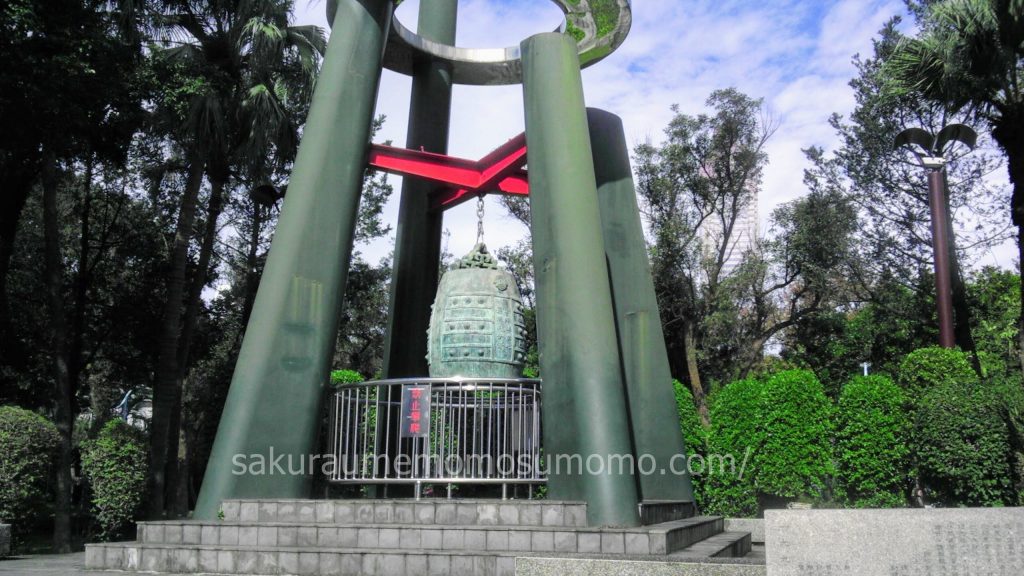
1947年2月28日に起きた二二八事件とは What is the February 28 Incident that occurred on February 28, 1947?
50年にわたる日本の統治が終戦とともに終わり、中国国民党政府に主権が変わったが、文化や言語の違いや差別など不当な扱いを受け続けた台湾の民衆は抗議文を届けようと立ち上がりデモ行進をする。しかし、当局や警察と衝突し、多数の犠牲者を生むことになった悲しい事件です。
1895-1945まで統治は日本(言語は日本語)。
1945-中国国民党政府が主権を握る。日本語は敵国語とみなされ、強制的に中国語に切り替えさせられる。台湾にもともと居住していた人たちは、いろいろなところでさまざまな差別にも遭い、不平等感が蔓延した。
After 50 years of Japanese rule ended with the end of the war, the sovereignty was changed to the Kuomintang government, but the Taiwanese people who continued to be treated unfairly due to cultural and language differences and discrimination stood up and marched to deliver protests. do. However, it was a sad incident that clashed with authorities and police and resulted in a large number of casualties.
Until 1895-1945, the rule is Japan (language is Japanese).
1945-Kuomintang government takes sovereignty. Japanese is considered an enemy language and is forced to switch to Chinese. People who originally lived in Taiwan faced various types of discrimination in various places, and a sense of inequality was widespread.

写真の紀念館は、もともと日本統治時代に「台北放送局」(ラジオの放送局、建築家:栗山俊一)でした。
しかしまた二二八事件で多大な犠牲を出した発端ともなった場所。
事件の起きた1947年当時は、まだ各家庭にラジオなどなく、拡声器を植え込んだ、放送塔なるもので放送を流していたそうです。
The memorial hall in the photo was originally the "Taipei Broadcasting Station" (radio broadcasting station, architect: Shunichi Kuriyama) during the Japanese colonial era.
However, it was also the place where the great sacrifice was made in the 228 incident.
At the time of the incident in 1947, there was no radio in each home, and it was said that broadcasting was done by a broadcasting tower with a loudspeaker installed.
以下台北ナビから抜粋。
参考サイト:台北ナビ
1947年2月27日、ある闇タバコを売る女性が警察に取締りを受け暴行される。それを目の当たりにした周囲の民衆が助けようと集まったのがきっかけで、警察側が発砲し、市民の一人が銃弾に倒た。中国本土からやってきた国民党の人たちと、文化の違いがあることや言葉の壁は、台湾本土の人民を大半の政府やそれに関連するポストから遠ざけさせてた。
つのる不満を抱え、闇タバコの一件から当時煙草の販売を管轄していた専売局に市民たちは抗議文を届けようと、デモ行進をする。
こうして台湾全土に運動は広まり、もともと台湾の自治運動を支援する知識層の人々もその輪に加わった。
二二八事件での犠牲者は、主に容疑をかけられた本省人、憲兵隊によって無差別に鎮圧を受けた人々を合わせ、およそ28,000人にも上るとされている。実際にはそれ以上の犠牲者がいるとされており、今でも政府や民間による調査が行われている。
この事件がとても悲しいのは、同じ台湾人同士がお互いに殺傷し合い、多大な犠牲者を出してしまったということです。しかも戒厳令のもと、事件について発言することは厳禁とされ、人々は長い間、抑圧された感情を抱えながらずっと生活し続けたのでした。
The following is an excerpt from Taipei Navi.
On February 27, 1947, a woman selling a dark cigarette was cracked down by police and beaten. When the people around him gathered to help him, the police fired and one of the citizens was shot down. Cultural differences and language barriers with the Kuomintang people from mainland China have kept the people of mainland Taiwan away from most governments and related posts.
Citizens march to deliver a protest statement from a case of dark cigarettes to the monopoly bureau, which was in charge of selling cigarettes at the time, with vine dissatisfaction.
In this way, the movement spread throughout Taiwan, and the knowledgeable people who originally supported the Taiwanese autonomy movement joined the circle.
The number of victims in the 228 incident is estimated to be about 28,000, including mainly the suspected Native Taiwanese and those who were indiscriminately suppressed by the military police. In reality, it is said that there are more casualties, and investigations by the government and the private sector are still underway.
What makes this case so sad is that the same Taiwanese killed each other and caused great casualties. Moreover, under martial law, it was strictly forbidden to speak about the incident, and people lived for a long time with oppressed feelings.
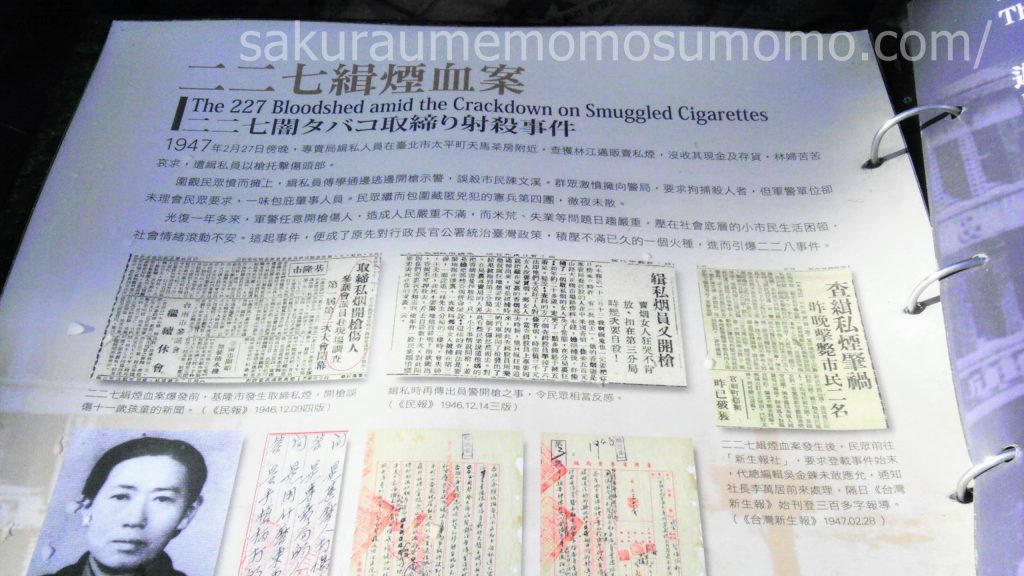
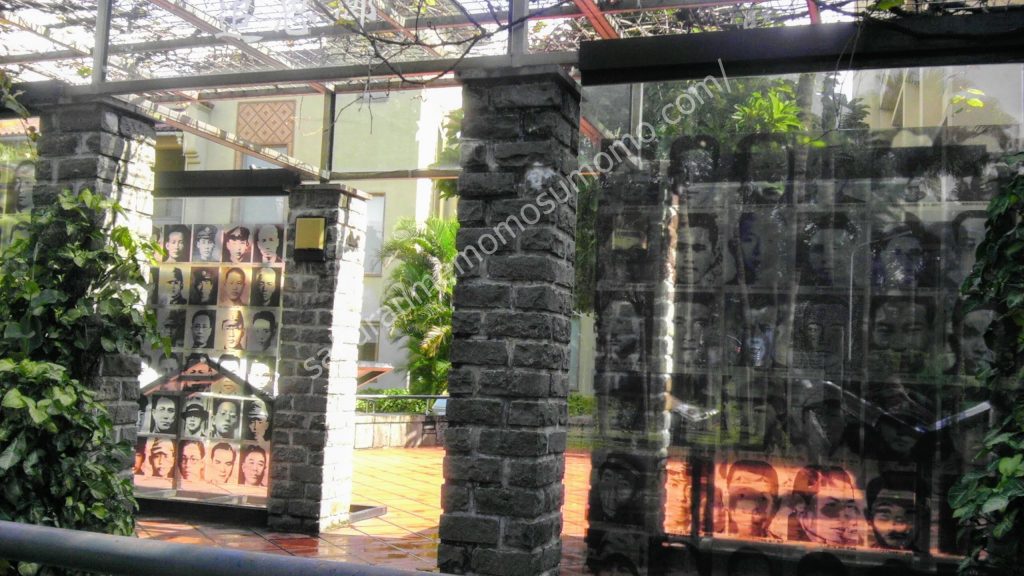
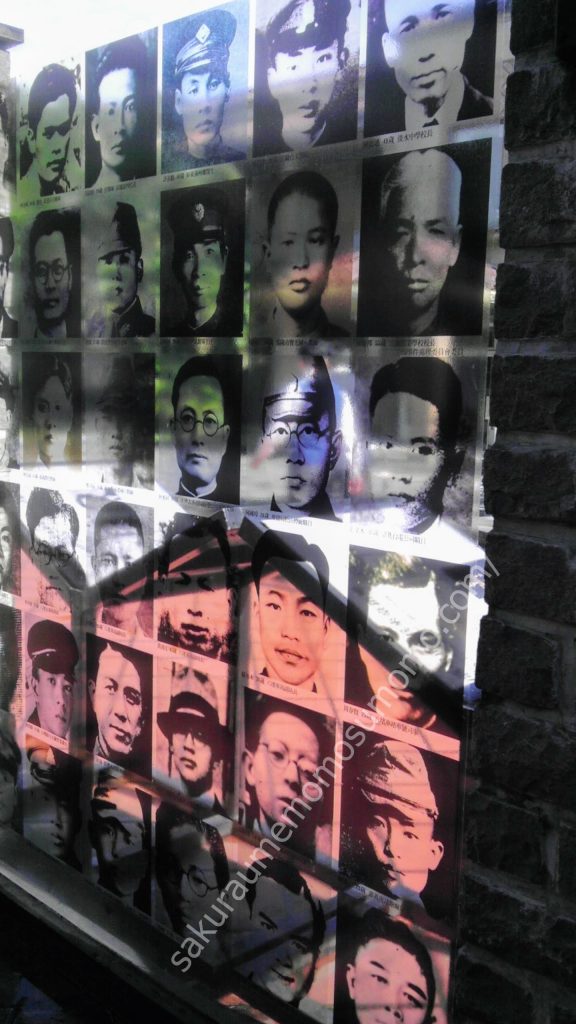
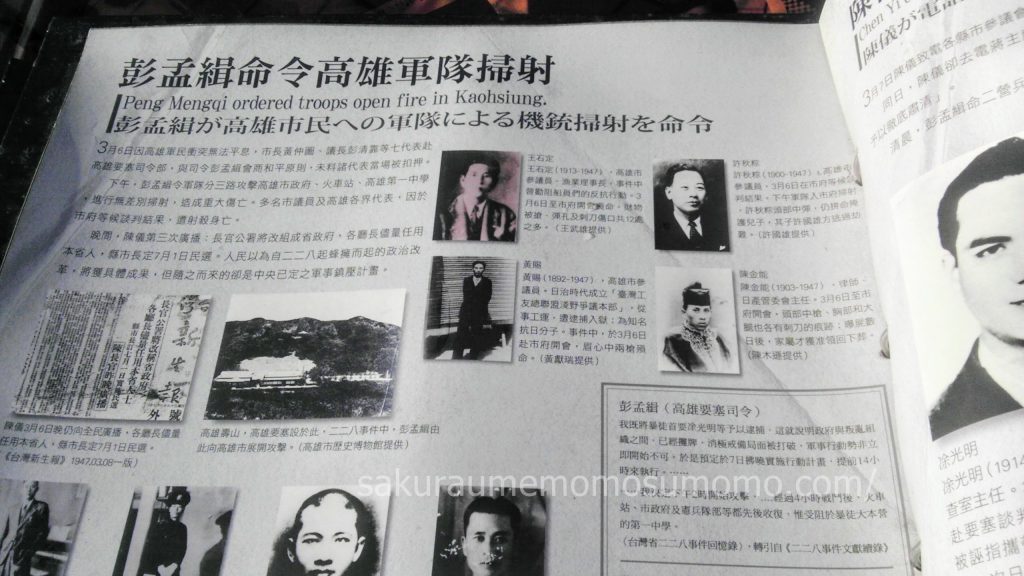
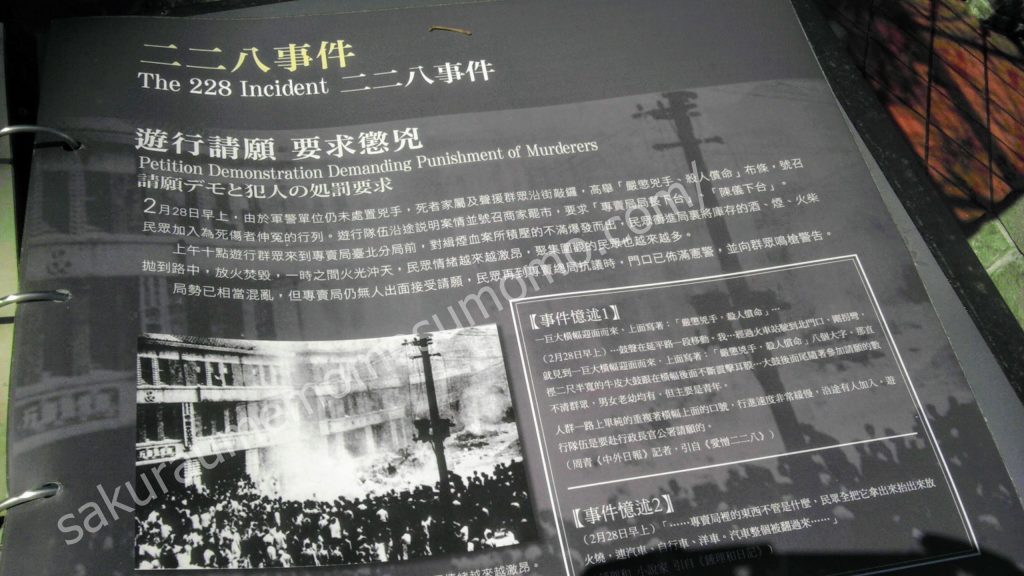
市民の憩いの場でもある公園 A park that is also a place for citizens to relax
二二八紀念館を通り過ぎると、その先は市民の憩いの場と変わります。
リスが多く上を見上げると木の枝に1匹は見つけることができるでしょう。
ちょっとしたステージとベンチがあり、良い季節の週末には市民コンサートでもやってそうです。
After passing the 228 Memorial Hall, the area becomes a place of relaxation for the citizens.
If you look up at many squirrels, you will find one on a tree branch.
There's a little stage and benches, and it's likely to be a civic concert on a good weekend.
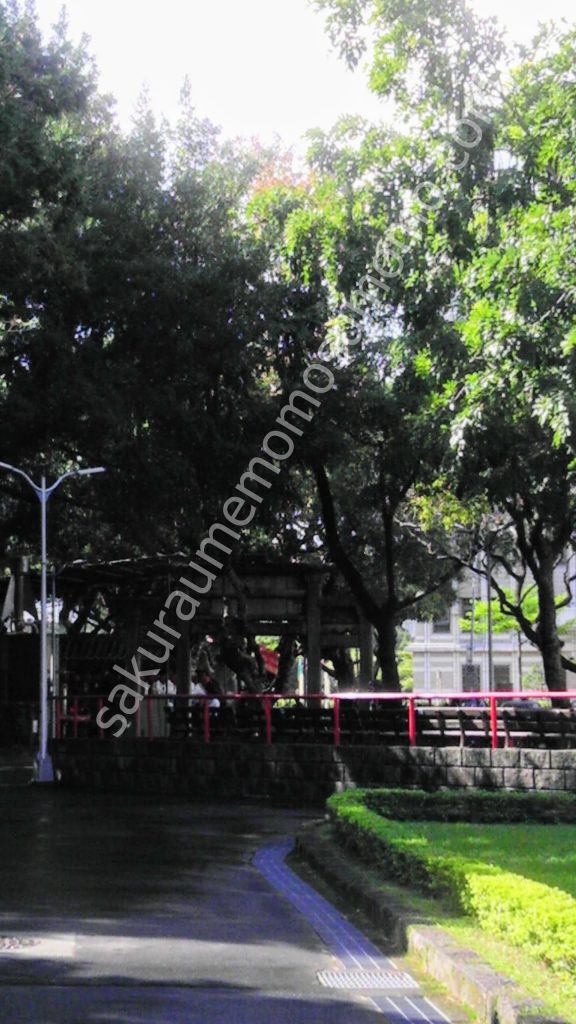
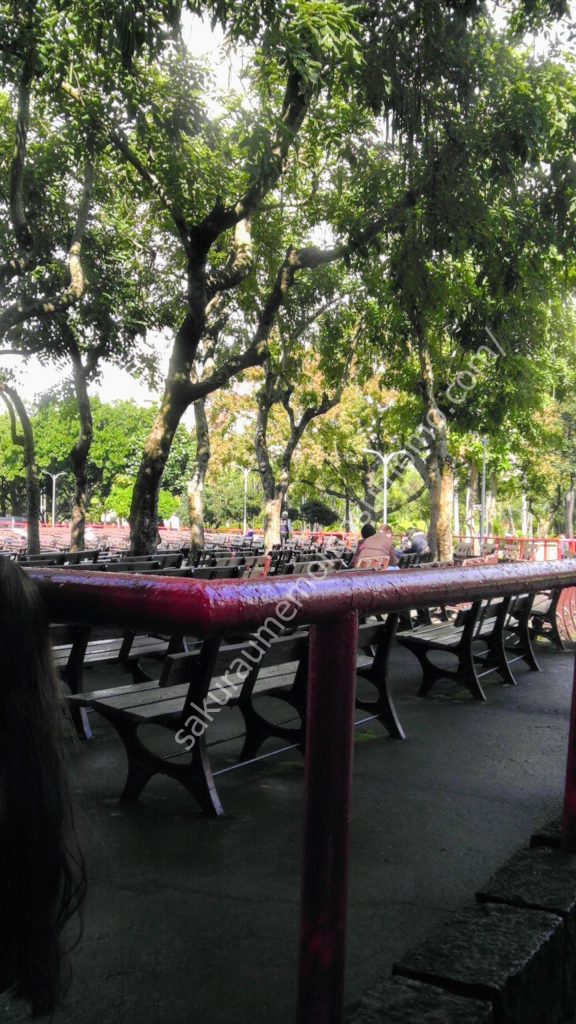
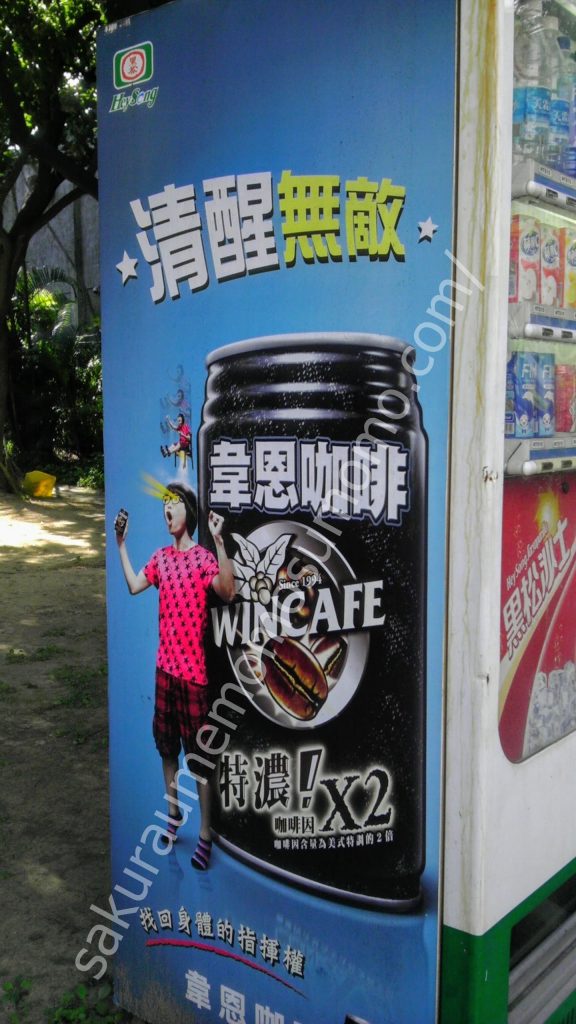
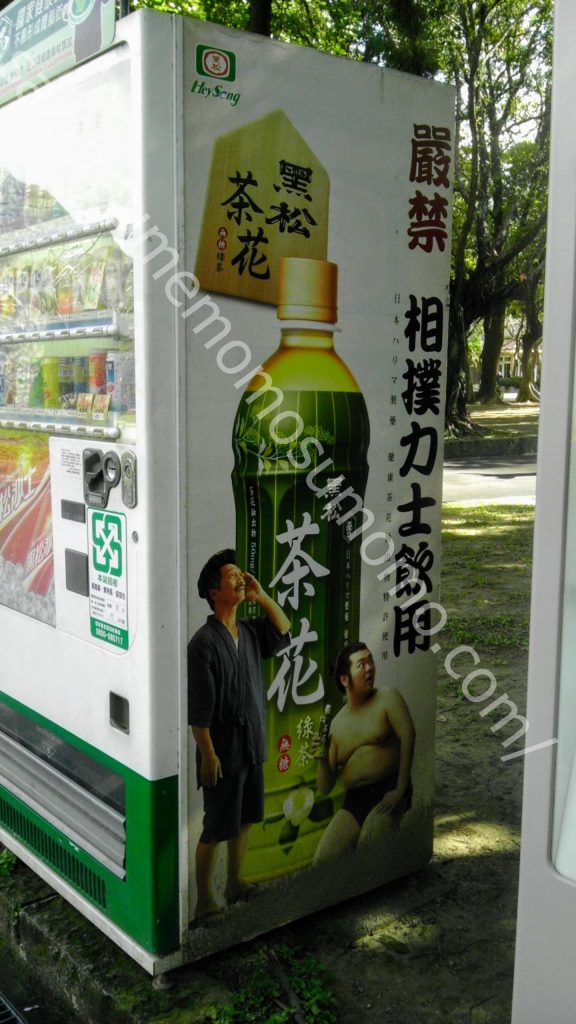
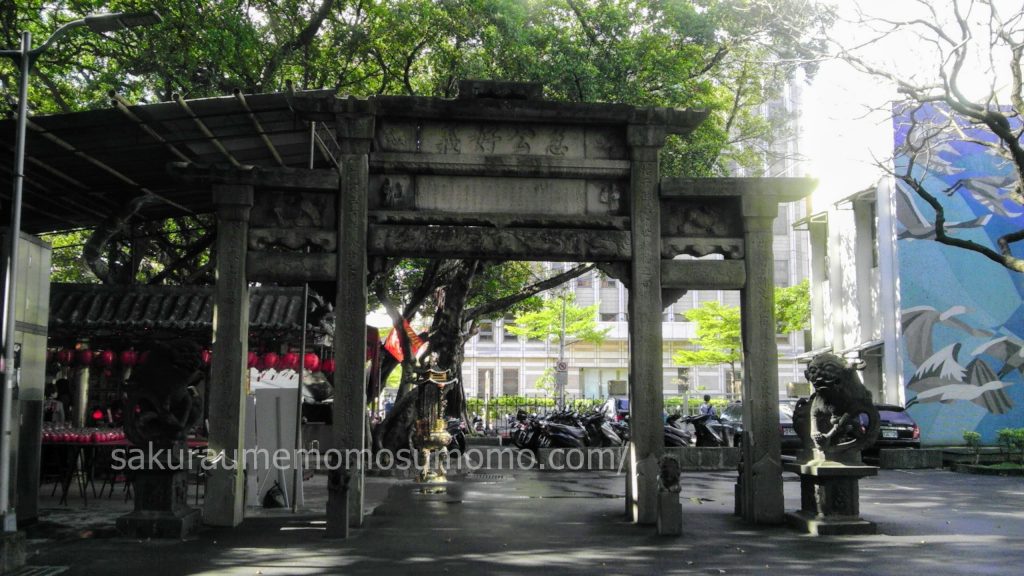
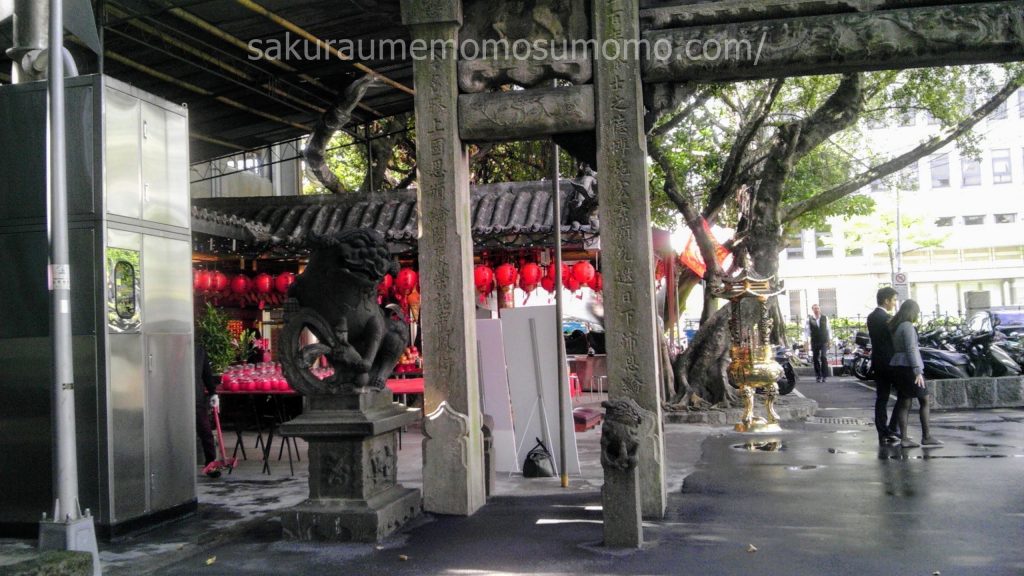
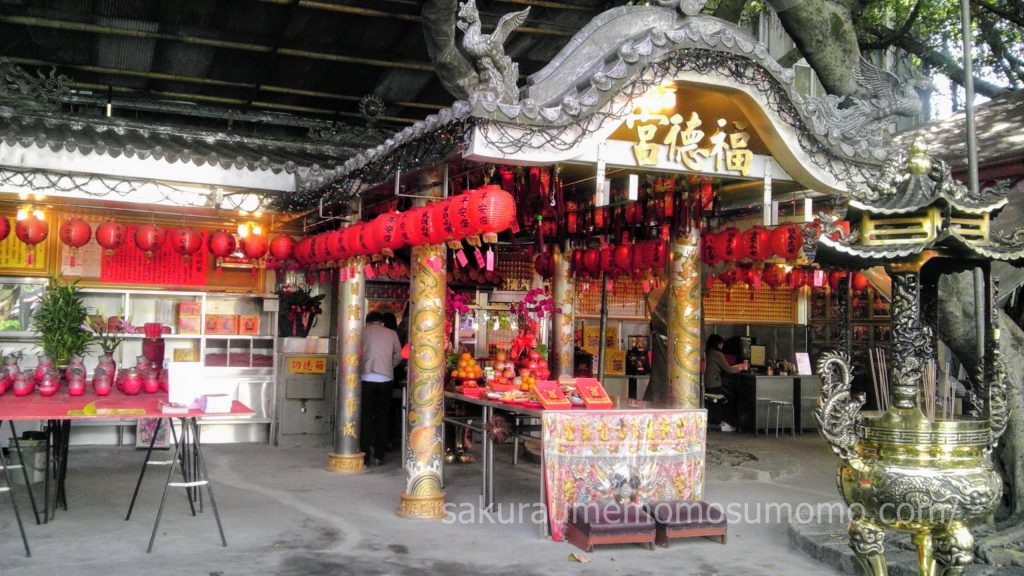
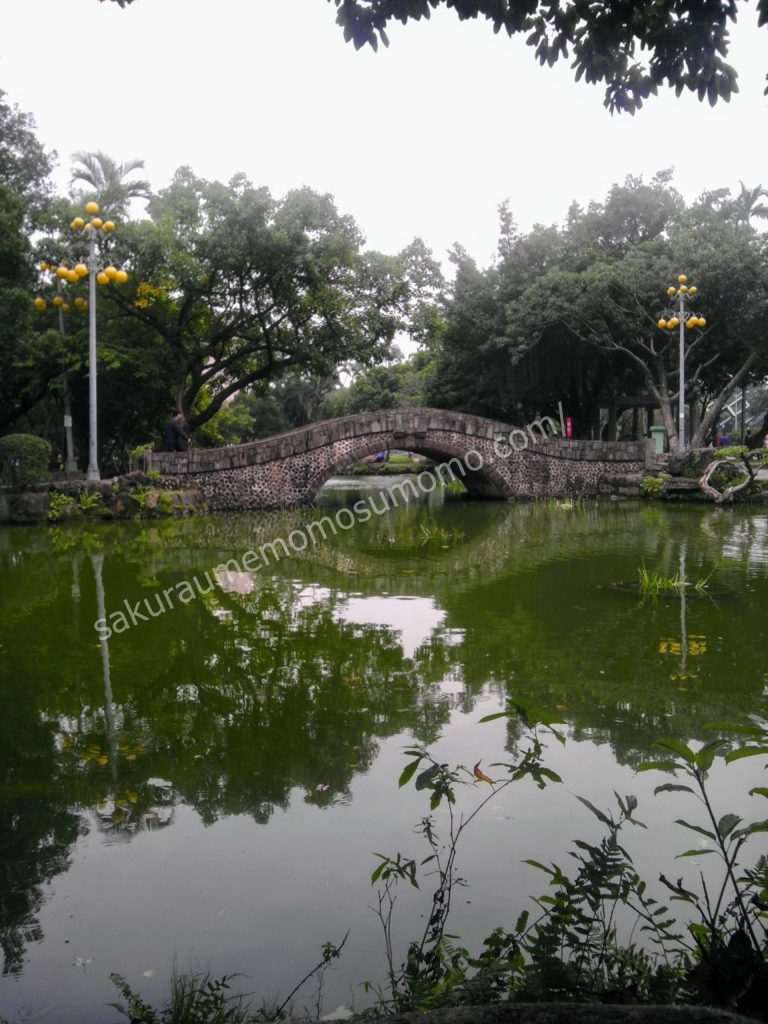
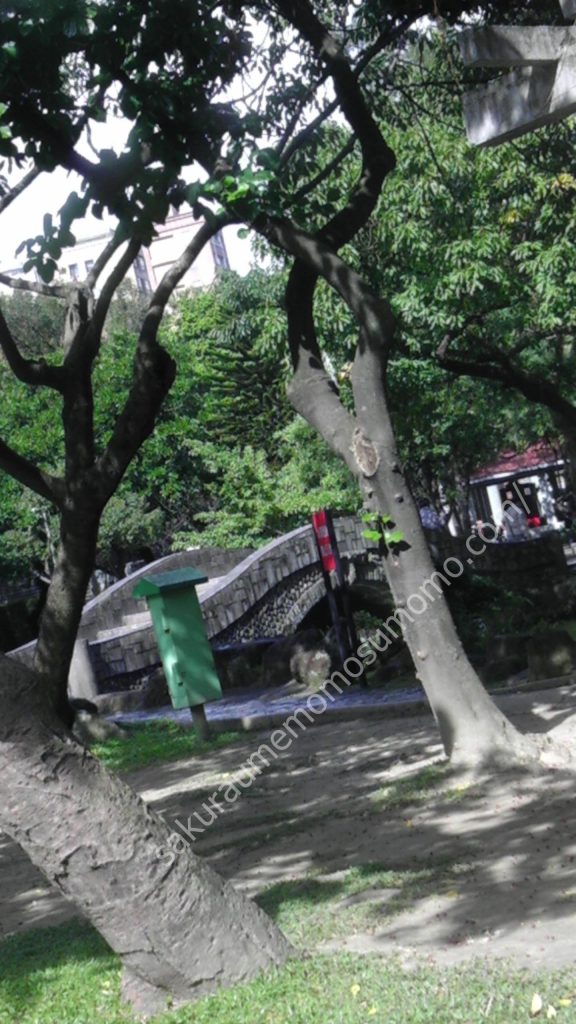
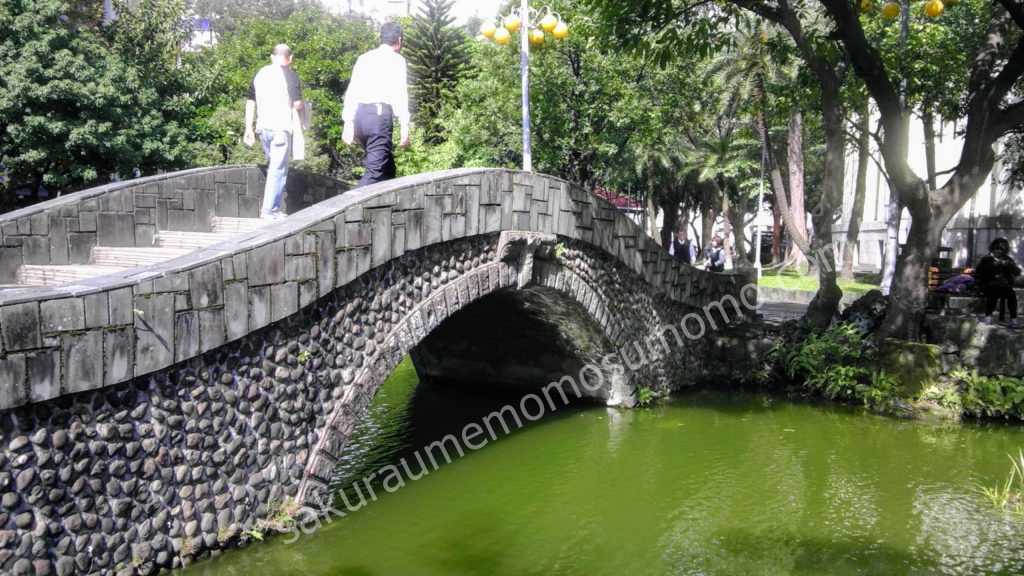
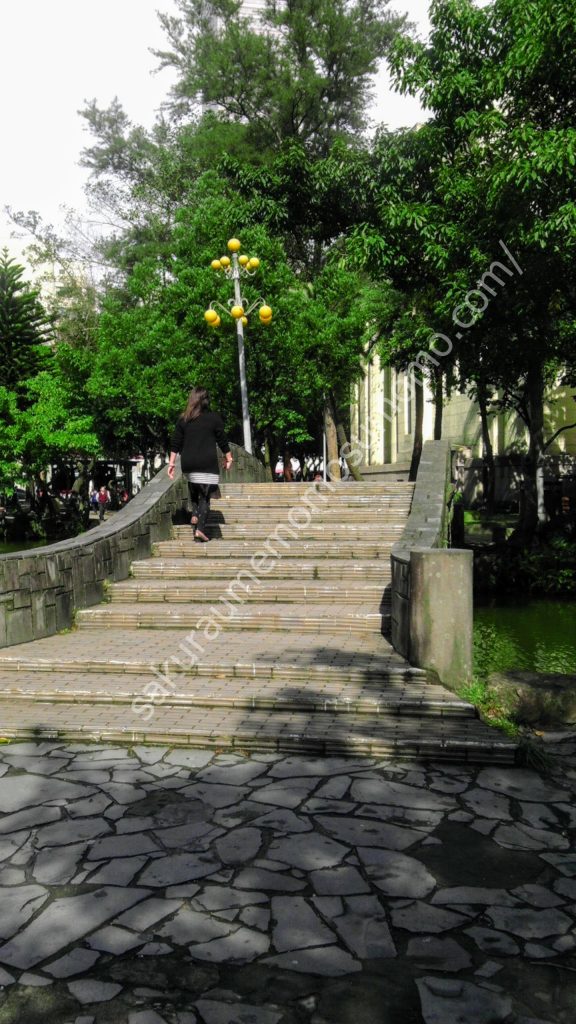
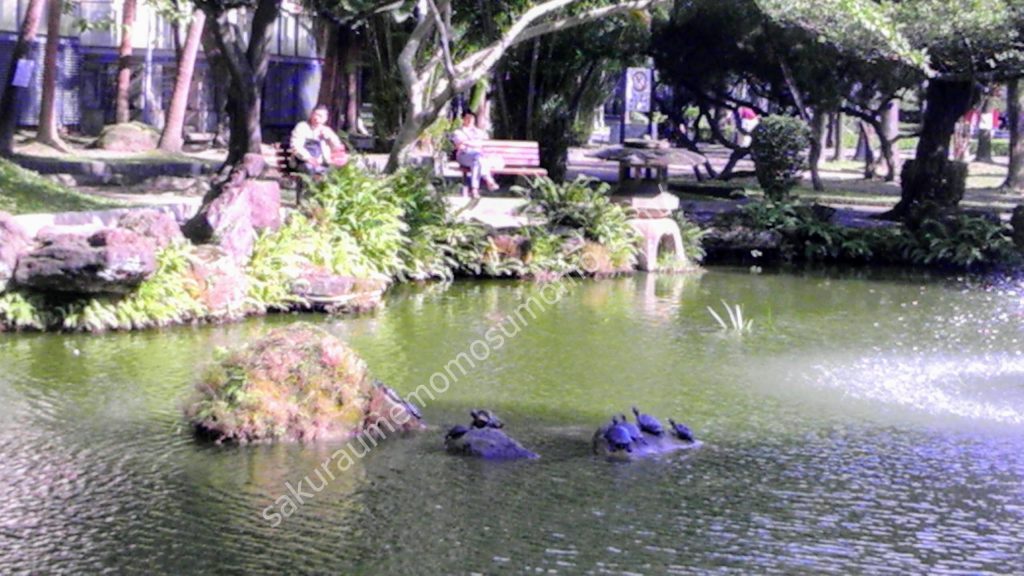
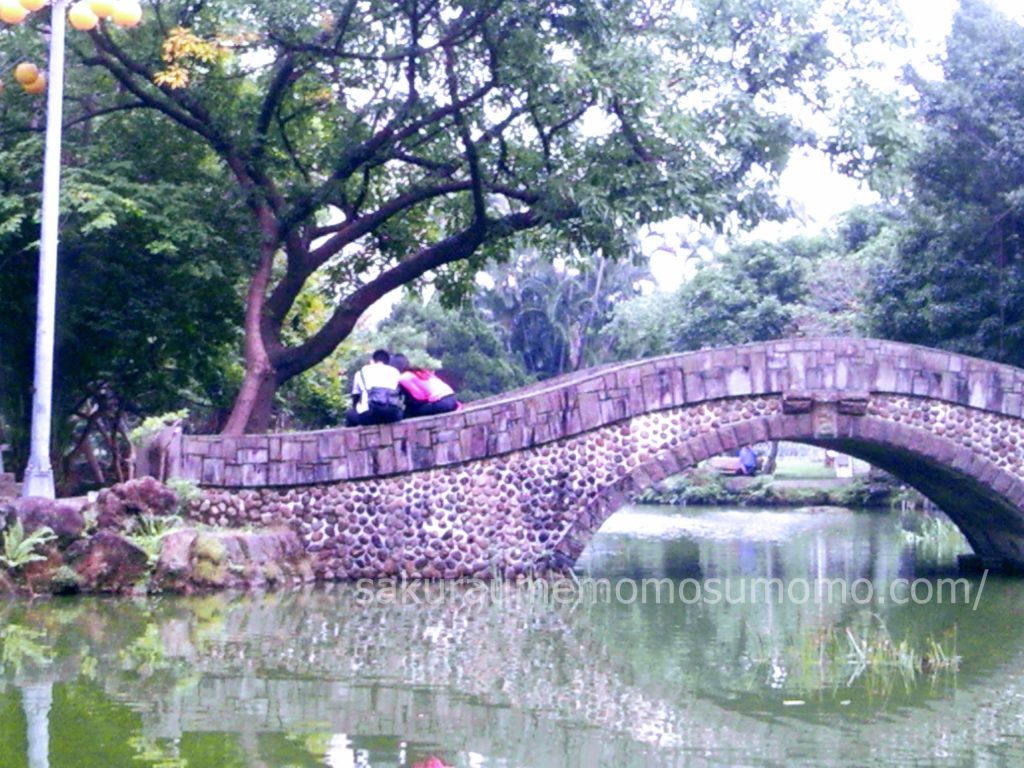
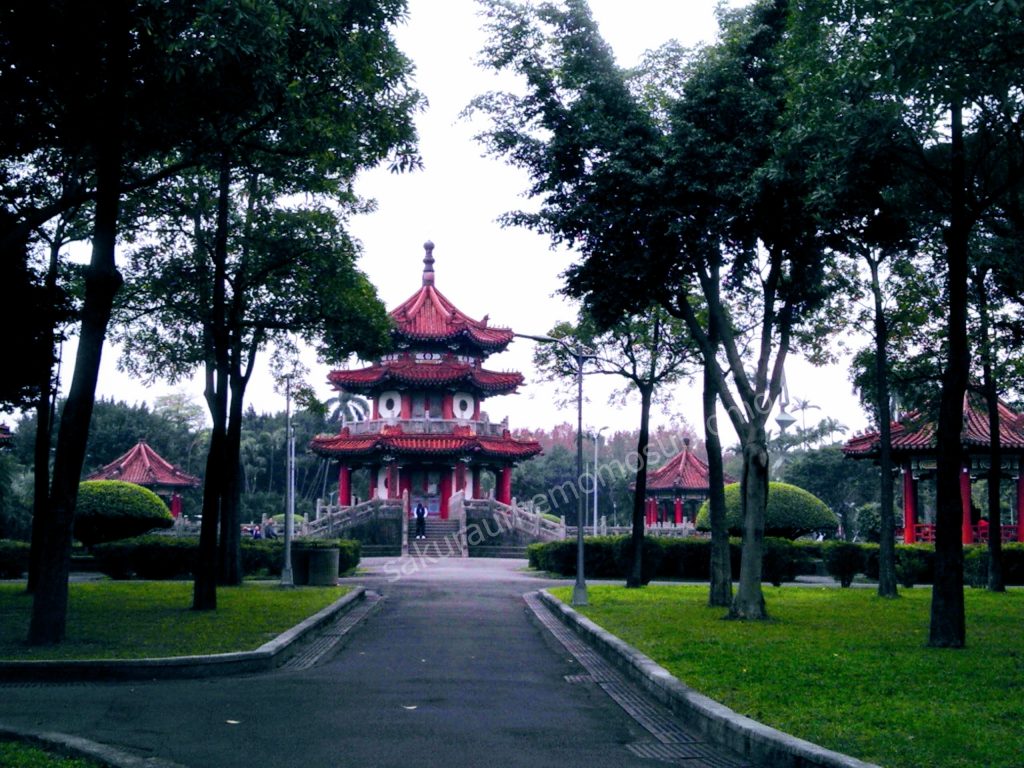
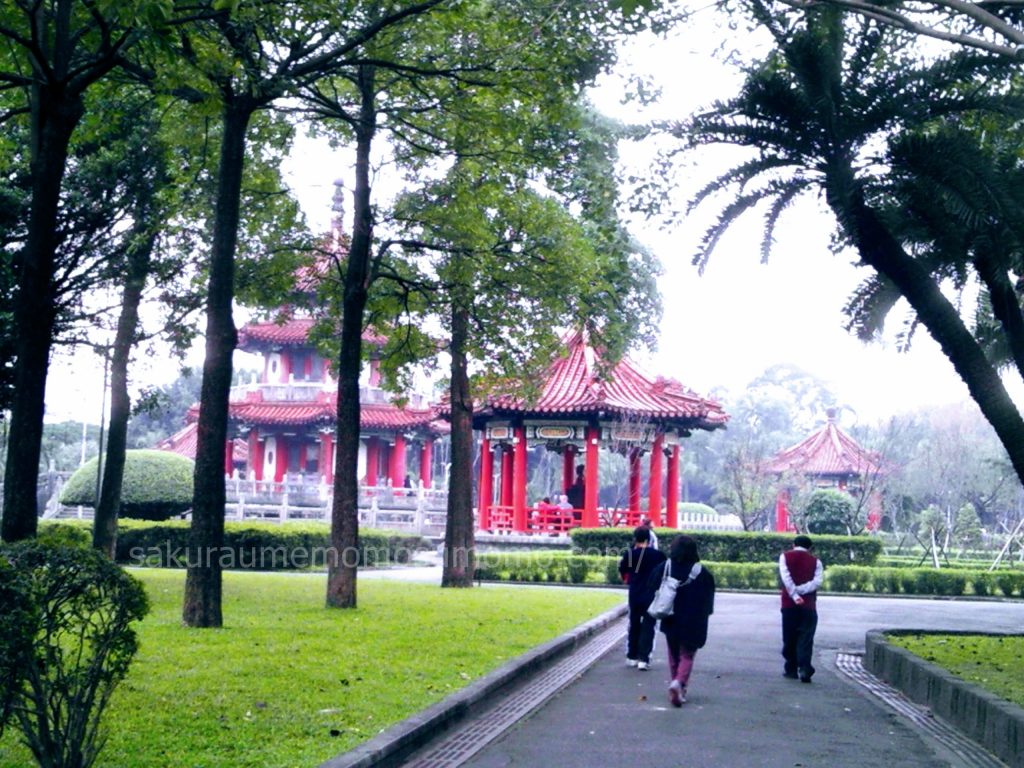
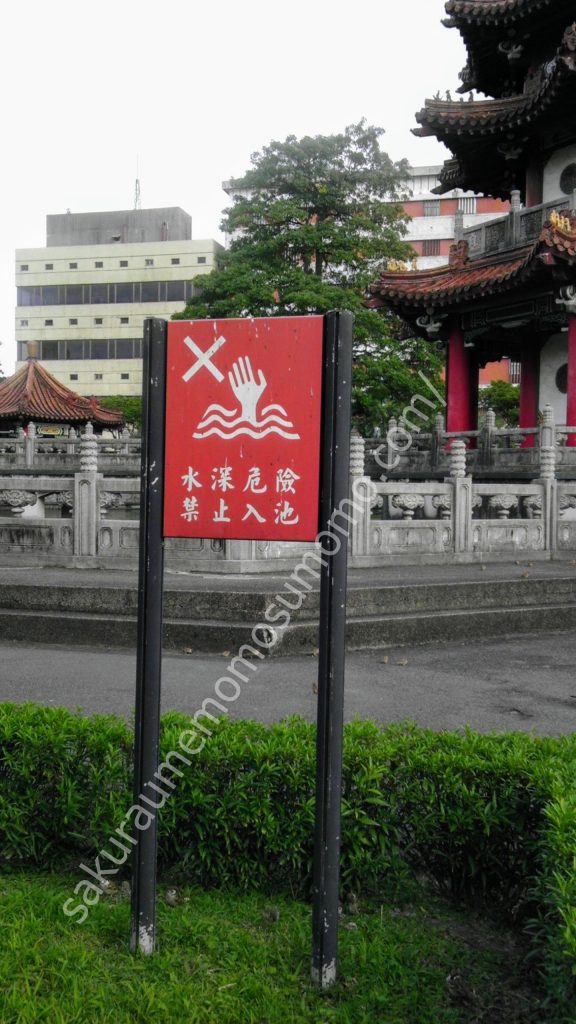
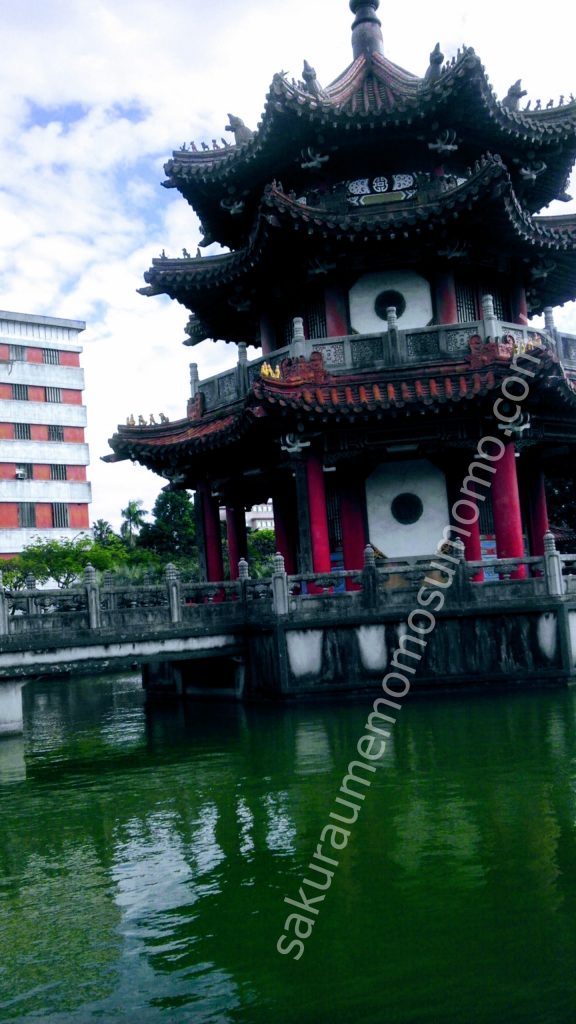
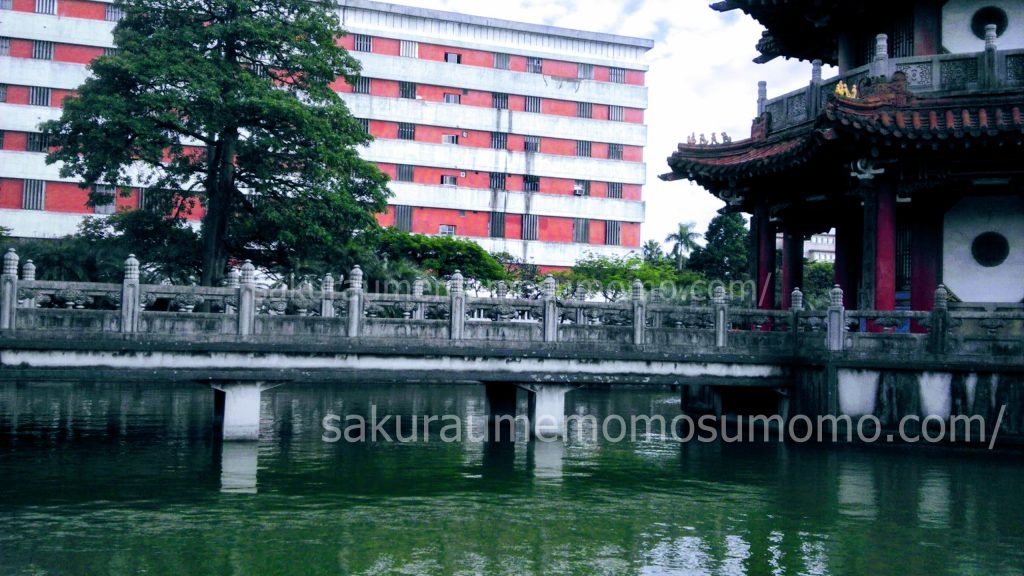
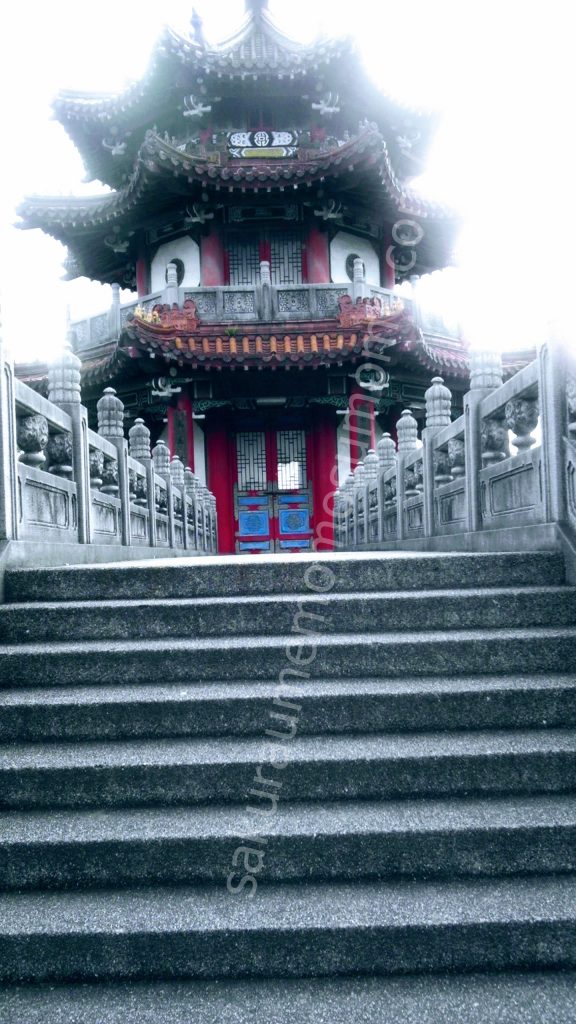
公園にギリシャ神殿!? 国立台湾博物館 Greek temple in the park! ?? National Taiwan Museum
中華系建築物を通り過ぎると、急にギリシャ神殿のような建物が見えてきました。As I passed the Chinese buildings, I suddenly saw a building like a Greek temple.
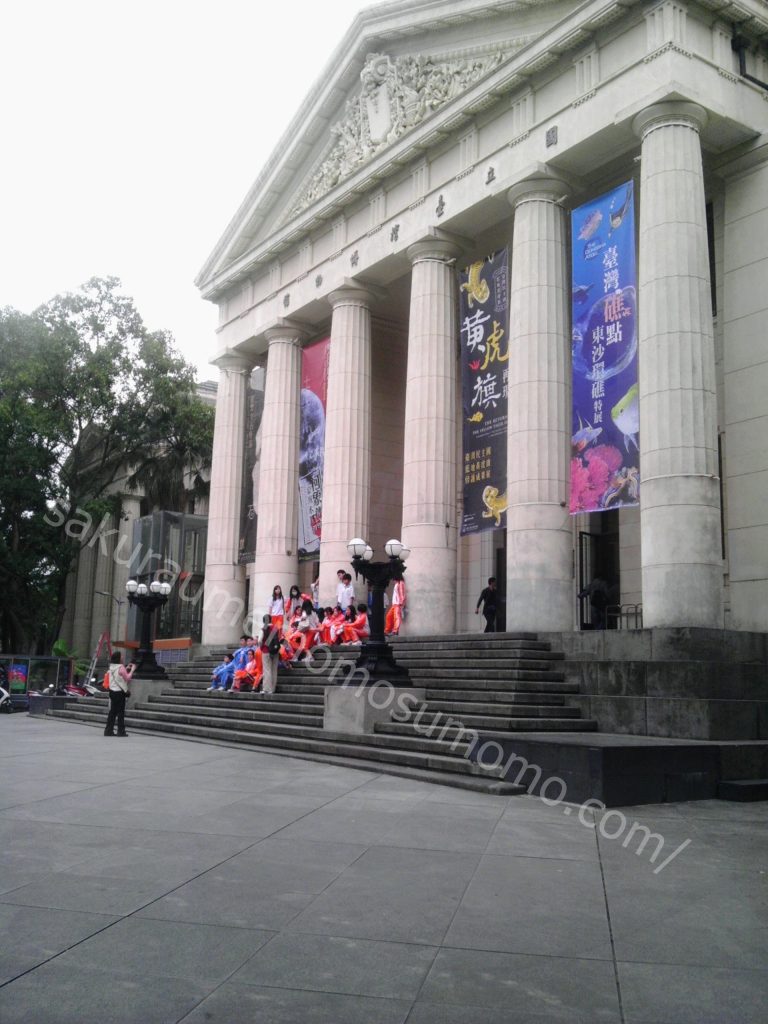
1908年に設置された台湾でもっとも歴史のある博物館。
新館は日本統治時代に「児玉総督後藤民政長官記念館」として建設され、1915年に落成。現在は国定古跡に指定されています。
外観の設計はギリシャとローマの様式を組み合わせており、台湾一美しい博物館とも言われているそう。
エントランスは32本の柱が四周を囲み、柱頭は精緻な模様があしらわれています。
ドームの頂にあるステンドグラスの窓から採光されるようになっており、美しい色使いの光がエントランスに注ぎ込まれます。
台湾の歴史を見つめ続けてきた建物で、創館当時の規模を維持しています。テーマ展示のほか、館内では各種イベントも開催されます。
The oldest museum in Taiwan, established in 1908.
The new building was built as the "Chief of General Affairs Goto Memorial Hall" during the Japanese colonial era, and was completed in 1915. It is currently designated as a national historic site.
The exterior design combines Greek and Roman styles and is said to be the most beautiful museum in Taiwan.
At the entrance, 32 pillars surround the four circumferences, and the stigma is decorated with a delicate pattern.
Light is taken from the stained glass window at the top of the dome, and beautifully colored light is poured into the entrance.
It is a building that has been looking at the history of Taiwan and maintains the scale at the time of its founding. In addition to the theme exhibition, various events will be held in the hall.
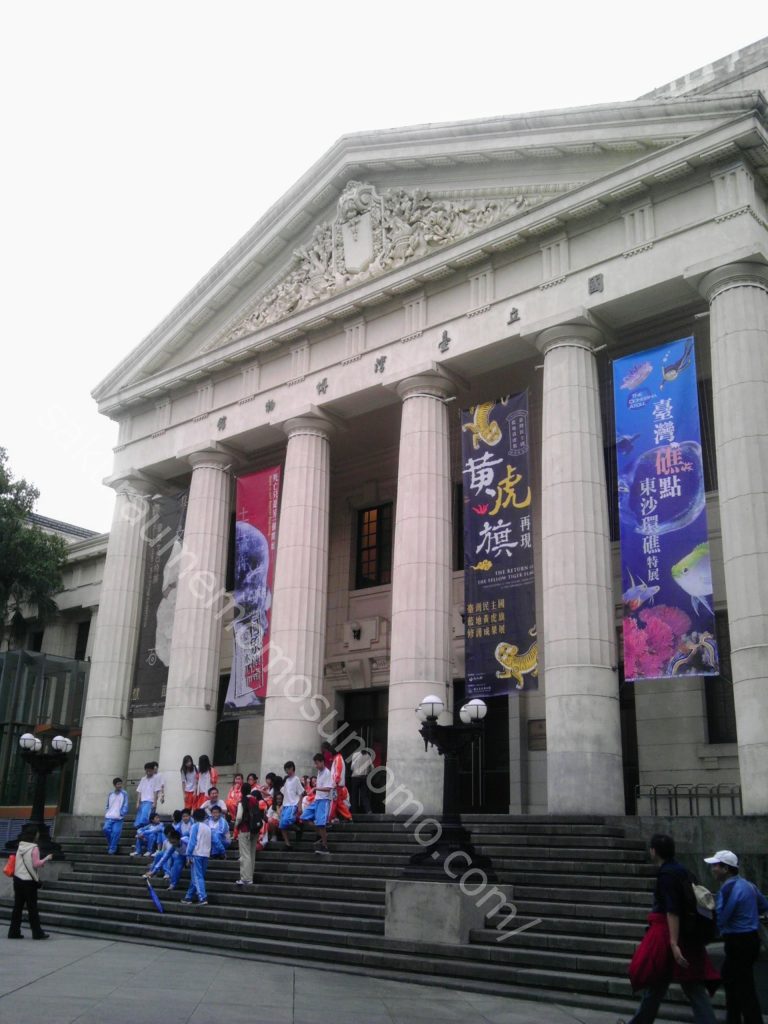
ニニ八公園を抜けるとまた重厚な建物 After passing through Ninihachi Park, a heavy building
博物館のすぐそばの出口を出てすぐまた重厚な建物がありました。
Immediately after exiting the exit near the museum, there was another heavy building.
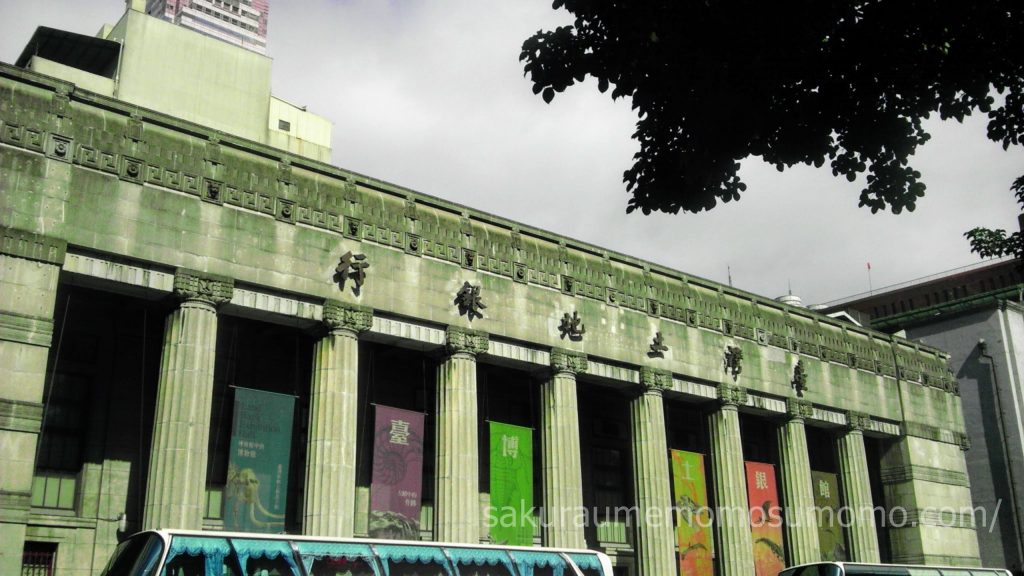
この建物は、勧業銀行旧廈、旧日本勧業銀行台北支店、「勧業銀行旧ビル」とも言う。
参考サイト:https://ja.wikipedia.org/wiki/%E5%8B%A7%E6%A5%AD%E9%8A%80%E8%A1%8C%E6%97%A7%E5%BB%88
台湾台北市中正区襄陽路にある直轄市定古蹟の建築物。
日本統治時代の1933年に旧日本勧業銀行(その後第一勧業銀行を経て現みずほ銀行)の台北支店として建てられた。ほぼ同時期に完成した旧日本勧業銀行台南支店との類似点が多い。
戦後は台湾土地銀行の総行(本店)として使われた。古蹟指定後は修復を経て現在は国立台湾博物館の別館「土銀展示館」となっている。
This building is also called the former former building of the Kangyō Bank, the former Taipei branch of the Nihon Kangyō Bank, and the former building of the Kangyō Bank.
A building of a municipality under the direct control of Yangyang Road, Zhongzheng District, Taipei City, Taiwan.
It was built in 1933 during the Japanese colonial rule as the Taipei branch of the former Nihon Kangyō Bank (then passed through Dai-Ichi Kangyo Bank and now Mizuho Bank). There are many similarities with the former Nihon Kangyō Bank Tainan Branch, which was completed at about the same time.
After the war, it was used as the general bank (head office) of the Land Bank of Taiwan. After being designated as a historic site, it has been restored and is now the annex of the National Taiwan Museum, "Dogin Exhibition Hall".
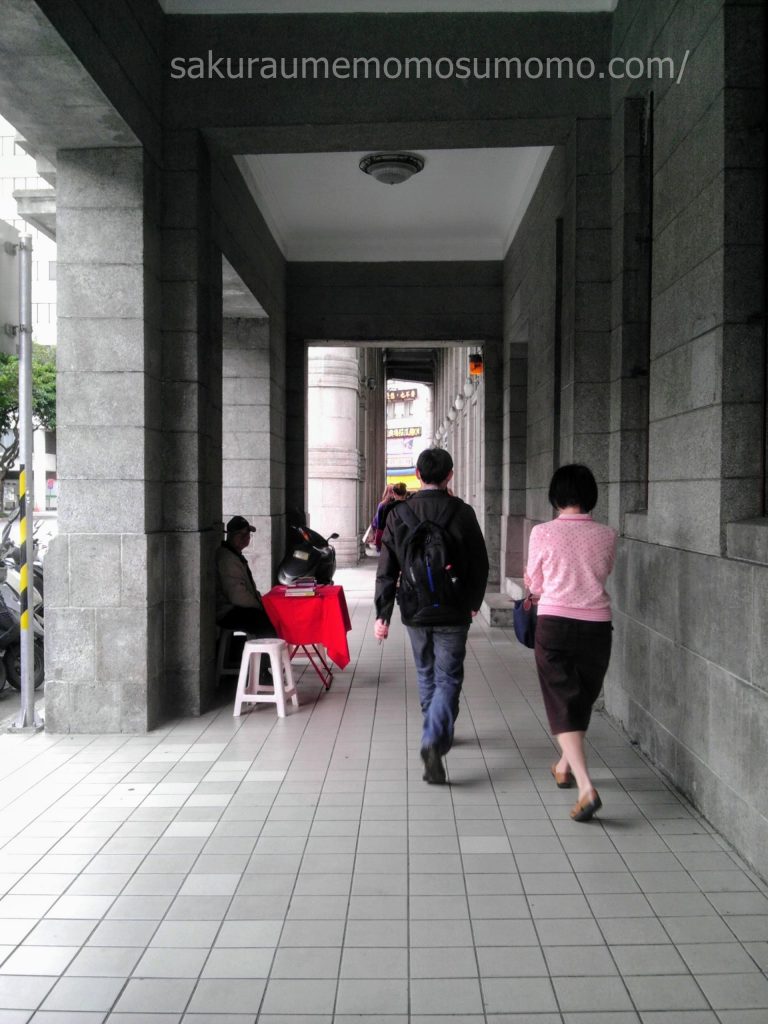
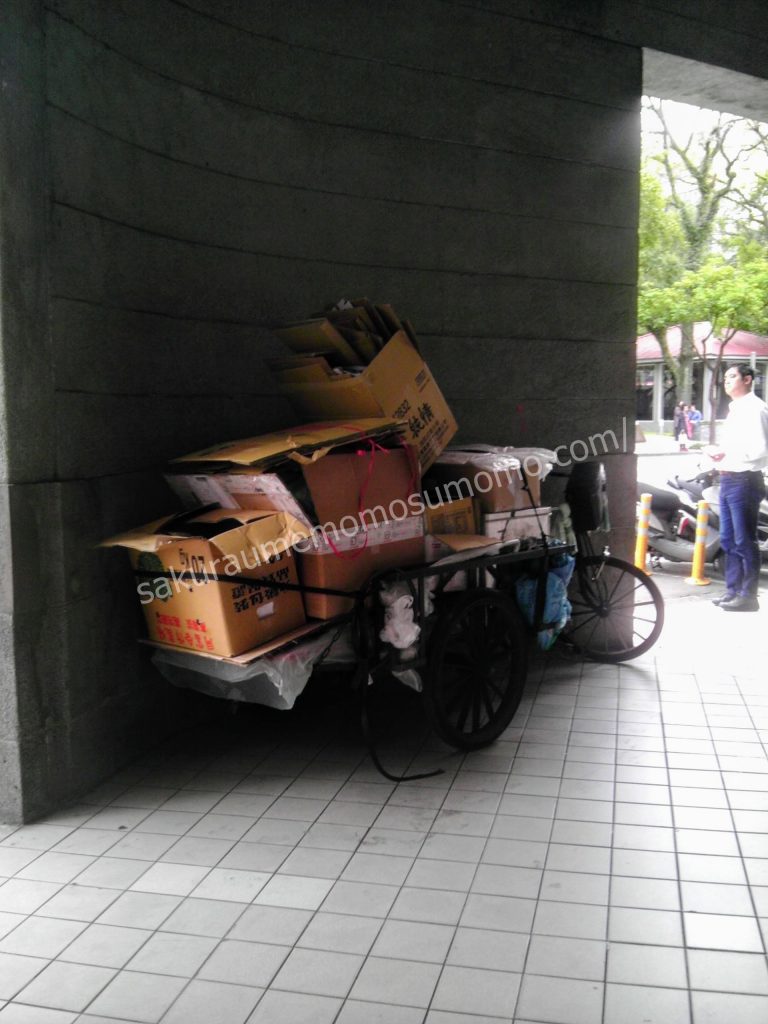
このビルの通りにも古い建物がありますが、おいしいお弁当が買えるお店もあります!そのご紹介は別ページで!
There are old buildings on the streets of this building, but there are also shops where you can buy delicious lunch boxes! The introduction is on another page!
